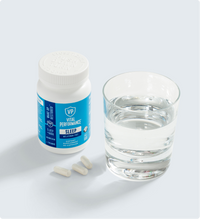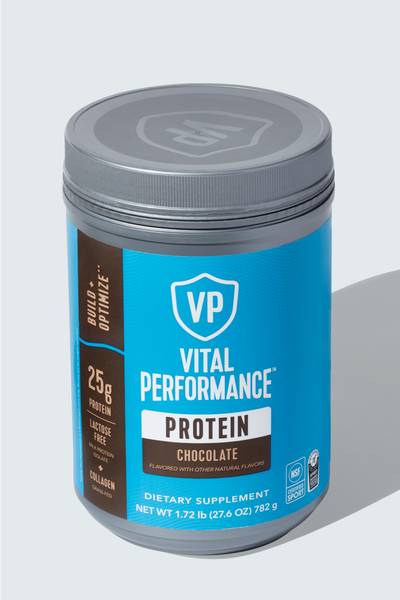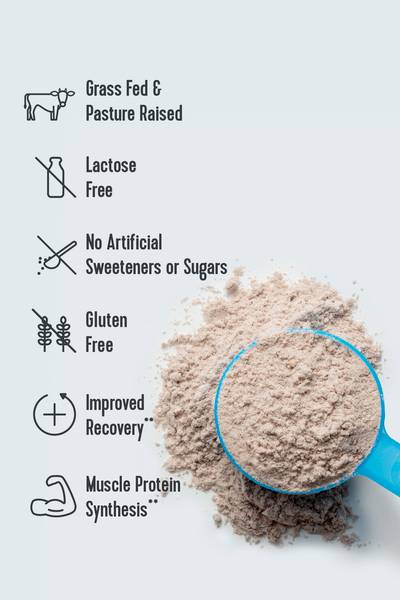Having trouble bouncing back after a tough workout? Your post-workout recovery (or lack thereof) could be to blame.
"Lack of a proper recovery doesn't allow your body to maximize all the health benefits of your workout," says Ridge Davis, a celebrity fitness expert. "Improper recovery can lead to an impaired immune system, poor concentration … and gradual breakdown of your body's capabilities."
To help you get the most out of your workouts, we spoke to fitness pros to get their top tips on the post-workout recovery your routine is missing.
Vital Note: This article has been made available for informational and educational purposes only. It is not intended to be a substitute for professional medical advice, diagnosis, or treatment. Always seek the advice of your physician or another qualified health provider with any questions you may have regarding a medical condition. Your licensed healthcare professional can best provide you with the diagnosis and treatment of any medical condition and assist you as well in deciding whether a dietary supplement will be a helpful addition to your regimen.
1. never skip the cooldown
Even if you're pressed for time, you should never skip the cooldown (aka the period of time where you stretch your muscles out immediately after a workout).
"After a workout, the muscles are fatigued and the fascia (connective tissue around the muscle bellies) is inflamed from overloading the body's abilities," says Corey Phelps, a NASM certified personal trainer and certified holistic nutrition coach based in Washington, D.C.
"Stretching is great for keeping the muscles healthy and promoting blood so the muscles can receive the proper nutrients it needs."
Doing so won't require too much time — 10-15 minutes, tops, and you can listen to a podcast or your favorite playlist to help pass the time.

2. try foam rolling
Your sore muscles are no match for a foam roller. This is the popular self-massage tool that everyone from runners to yogis use.
"It helps soothe and relieve the inflammation of the connective tissue surrounding the muscles in the body," Davis says. In other words, it’s what causes a lot of ooh’s and ahh’s.
For instance, say you just did a lower-body session, Tim Liu, an online fitness and nutrition coach, says that you can roll out the glutes by maneuvering your body in a certain way.
In this case, it's by sitting on the roller with one leg crossed over the other. "Lean on the side that is bent and work your way down and up the area, alleviating any tension built up," he says, adding that you could even incorporate some static and dynamic stretching afterward.
"Going back to the example of the glutes, after foam rolling, you can position yourself in a pigeon pose stretch for 30-90 seconds each side."
If you're looking for an even deeper impact, you could use a massage gun or vibrating foam roller, both of which utilize vibration therapy. It's something that Lauren Seib, a NASM certified personal trainer and postpartum corrective exercise specialist, swears by.
"It relieves muscle tightness and soreness while increasing range of motion," she says.
Related Articles
3. eat protein
You can still swig your protein shake both during and after a workout, but it's important to chow down on some solid foods as well.
"After stretching, your body has already absorbed the protein shake, so your body needs all the fiber and micronutrients that solid food offers," Davis explains to Lively.
Plan to eat within 30 minutes and choose food options that follow a 3:1 ratio of carbs to protein rich-snacks, adds Phelps. Doing so will help aid muscle repair and recovery.
Tucker's recovery meal is all about mixing it up. "Some of my go-to's are sashimi and a salad or roasted veggies, avocado toast on sprouted grain bread with a hard boiled egg sliced on top or a smoothie with lots of greens, collagen and a nut milk."
4. take the time to relax
It may sound like an oxymoron to relax after a workout — especially if exercise is your form of relaxation — but there's a good reason for it.
It gives your nervous system the chance to slow down so that your immune system can function properly and help the body recover faster. For Tucker, meditation is her cup of tea.
"This usually looks like me sitting in my car, closing my eyes and counting my breath for a few rounds while trying to slow my inhales and exhales or doing a 5-minute guided meditation using an app."
With these tips, you’ll be back on your fitness grind that much faster — and stronger.













